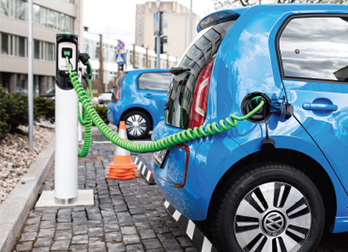The Electric Mobility Opportunity
Mr. Krishan Dhawan, May 15, 2018
There are many reasons to encourage electric mobility (EM) in India. These include environmental – replacing ICE engines will reduce CO2 emissions and combat global warming. Health – lower emissions will assist in addressing our deplorable air quality situation. Balance of payments and energy security – reduced oil imports will mean a healthier trade balance and reduced dependence on overseas sources for oil. Manufacturing and jobs – creating domestic capacity will contribute to both. Health of the domestic power sector – increased electricity demand will help the power generation sector use up excess capacity.
So, the reasons are many, and one can take one’s pick. A key overarching reason is technological development and its impact on prices, specifically battery storage. Battery storage is a key part of electric mobility technology and a major component of total cost. While there has been progress in several areas in electric mobility, a key enabler has been the improvement in the price, durability and weight of storage. This trend is expected to continue and could even be disrupted positively by the emergence on new storage technology. Just like the drop in solar PV prices have made solar power a viable alternative to thermal power, so too dropping battery prices are providing a viable option to ICE.
Whether or not we subscribe to any of the motivations listed at the beginning of this piece, market forces will compel change.
The Indian market has begun to respond. The Government has placed an initial order for 10,000 electric cars. Companies like SBI and WIPRO have taken the lead by pledging to move entirely to electric mobility. Cities are beginning to announce electric bus programs. Certain states have announced EV policies. 2 and 3 wheeler manufacturers are discussing plans to begin battery based products.
Yet, there are concerns about the impact a growing EM industry will have on the existing, flourishing ICE automotive sector. This sector is a major contributor to GDP (7.1 %), manufacturing (49%), tax revenue, jobs, FDI and exports. Will moves to encourage electric mobility undermine the favorable position the ICE industry is currently in?
The automotive manufacturing sector comprises vehicles and components, which are sold domestically and exported. The Indian automotive sector is an important part of the international supply change for vehicles and components. Export values for 2015-16 are $8.8 bn and $ 11 bn respectively. By value, exports constitute ¼ of the value of automotive components produced. Market developments and demand pattern changes overseas will have a significant impact on Indian manufacturing.
In recent months, auto major after auto major has announced its plans to phase out or reduce ICE products and switch to EVs over the coming years. Similarly, major cities and countries around the world have announced their plans to curb ICE vehicles. These changes will not happen overnight, but the writing is clearly on the wall.
It therefore behooves Indian industry to be part of this evolving global supply chain for electric vehicles and related components, and to start gearing up for the new sets of products that will be demanded. Indian manufacturers can leverage their strong relationships and their reputation for quality manufacturing that has underpinned its current standing in the ICE sector. The export oriented automotive sector has considerable experience in designing cars and components for foreign markets, where fuel efficiency, emissions and safety standards are more advanced than those currently prevailing in India. They have been able to use expertise developed in foreign markets to introduce more advanced products in India when they felt timing is right – or were forced to do so. This happened with BS IV fuel standards and is underway with BS VI.
What we don’t want to happen is for Indian industry to remain focused on defending its current market position and allow visible developments and signals from the market to be ignored. Indian manufacturers can respond to overseas business opportunities, as well as contribute to developing products, technologies and business models more suitable to Indian conditions. While the ICE may not disappear in the foreseeable future, its share in the automotive market is sure to fall, to be replaced by increased reliance on electric traction.
So, the best protection of domestic jobs and manufacturing will not be to remain rooted in ICE or to ignore EM adoption, but to take leadership in identifying new opportunities in an emerging transportation paradigm. Just like India established itself as a manufacturing hub for international ICE auto manufacturers, we should aim to do the same for the evolving EV industry and its components. Establishing export capabilities will assist in developing a competitive domestic business model. There are obvious issues around sourcing lithium, cobalt, graphite and rare earths required for electric mobility which will need to be addressed. There will also be significant opportunity to invest in R&D in battery storage, an area poised for both demand growth and technological change. There is much to be done – and the time to start is now.
